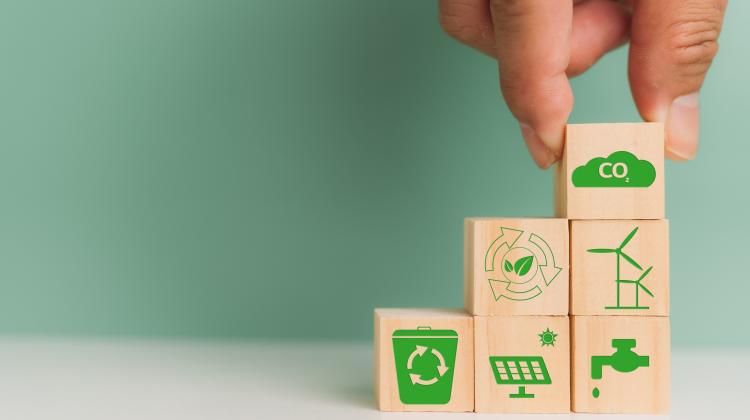What do recently promoted slogans have in common: circular economy and life cycle analysis (LCA)? Dr Aleksandra Ziemińska-Stolarska writes about the current priorities of the EU's economic policy, which are to help in the pursuit of sustainable development, both in economic and social terms.
What is a circular economy?
Circular economy, or closed-circuit economy, aims to create a system in which the generation of waste is avoided and the waste generated is reused to produce new products. Circular economy is primarily about extending the life cycle of products through their repeated use, repair or regeneration.
The main goal of circular economy is to avoid the so-called downcycling, i.e. the loss of value of the processed material, therefore this system means more than recycling. Circular economy creates high expectations and hopes for radical economic and social transformation. I think we all agree that the linear economy based on the principle "buy, use and throw away" must systematically give way to the idea: "buy, use, throw away, repeat".
Life Cycle Assessment
Moving to a circular economy requires thinking about how a product's lifecycle can be lengthened from the design stage and then at every link in the production, use and supply chain. LCA (Life Cycle Assessment) is an environmental management tool that identifies the most important environmental aspects and assesses their negative impact on the environment throughout the product's life cycle, from raw material extraction to final waste management ("from cradle to grave").
The first research on the aspects and assessment of the potential environmental impacts of a given product or process was carried out at the turn of the 1960s and 1970s. Harold Smith's report on the production of different types of energy by selected chemical processes, presented in 1969 at the World Energy Conference, can be considered one of the first documents to include life cycle assessment elements.
However, the actual beginnings of LCA are considered to be 1979 and the establishment of the non-governmental Society of Environmental Toxicology and Chemistry (SETAC). In 1993 the first and widely accepted LCA structure was published in the document "A Code of Practice". In the mid-90s The International Organization for Standardization (ISO) started work on the standardization of the LCA technique. At that time, a group of ISO standards from the 14040s series was created, in which the structure and methodology of LCA analysis were described.
In 2013, the European Commission published recommendations on the use of common methods for measuring and communicating environmental performance in the life cycle of products and organizations (2013/179 / EU). The document encourages the use of the LCA methodology as part of efforts to optimise companies' production processes and raise awareness of responsible consumption by clearly communicating information on the environmental performance of products.
LCA method in the circular economy
The LCA method in the circular economy takes on a new meaning and may become an important tool that allows to perform the analysis in a closed life cycle ("cradle to cradle").
The basic stage of the LCA analysis is to conduct a detailed balance of materials and energy use (input streams), as well as generated emissions and waste (output streams). Performing such a test may contribute not only to reducing the negative impact on the environment, but also tangible financial savings (e.g. by identifying the least effective stages of the production cycle), which in turn allows for the implementation of corrective measures. The Life Cycle Assessment method is based on quantitative data. Interpreting this information and translating it into environmental impacts requires the use of computational programs that have built-in environmental footprint methods.
The LCA method allows for the assessment of environmental threats (including depletion of resources, ozone hole, climate change, eutrophication, terrestrial toxicity, loss of biodiversity, etc.) and the search for solutions that minimize these environmental burdens. Reports from the recognized Ellen MacArthur Foundation indicate that the circular economy could contribute to reducing global greenhouse gas emissions by up to a fifth, making it a key tool in the fight against, among others, the global climate crisis.




